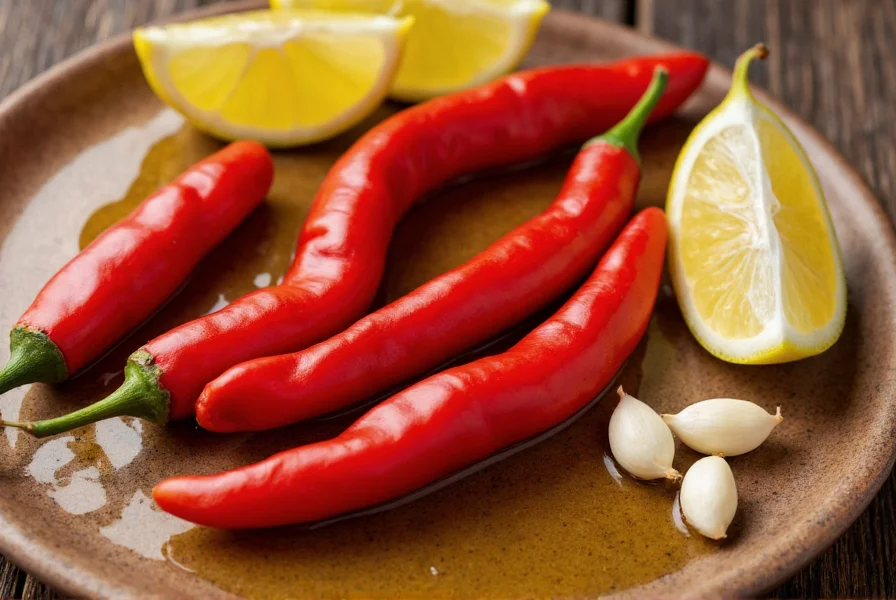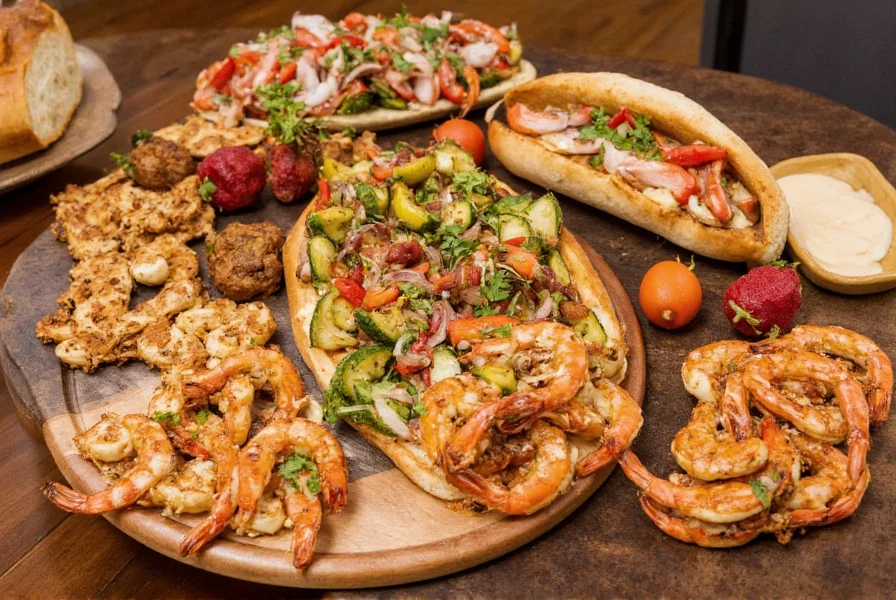Originating from Calabria, Italy's southernmost region, this fiery red sauce has gained international popularity for its perfect balance of heat and flavor. Calabrian chili aioli transforms ordinary meals into extraordinary culinary experiences with just a dollop. The magic lies in the distinctive peperoncini peppers that grow abundantly in Calabria's Mediterranean climate, giving the aioli its signature bright red color and complex flavor profile that ranges from fruity to moderately spicy.
The Unique Characteristics of Calabrian Chilies
Understanding Calabrian chilies is essential to appreciating this special aioli. These small, cone-shaped peppers (Capsicum annuum) pack more complexity than standard chili varieties:
| Characteristic | Calabrian Chilies | Comparison to Other Chilies |
|---|---|---|
| Heat Level | 25,000-45,000 Scoville units | Milder than habanero (100,000-350,000), hotter than jalapeño (2,500-8,000) |
| Flavor Profile | Fruity, citrusy, slightly smoky with berry notes | More complex than cayenne, less sweet than bell peppers |
| Common Forms | Crushed, paste, oil-preserved, dried flakes | More versatile preparation than fresh-only chilies |
| Regional Significance | Protected geographical indication (PGI) status | Similar to Champagne vs. sparkling wine distinction |
Authentic Calabrian chilies have a protected geographical indication (PGI) status, meaning only peppers grown in Calabria can bear the name. When shopping for ingredients to make calabrian chili aioli at home, look for products labeled "Peperoncino Calabrese DOP" for the most authentic experience. The crushed variety preserved in oil works particularly well for aioli, as the oil carries additional flavor that enhances the final sauce.
Essential Ingredients for Perfect Calabrian Chili Aioli
Creating exceptional calabrian chili aioli requires attention to ingredient quality and proportions. While traditional aioli uses just garlic and olive oil emulsified with egg yolks, the Calabrian version incorporates additional elements that complement the distinctive peppers:
- Calabrian chili product - Crushed chilies in oil provide the best texture and flavor distribution (about 1-2 tablespoons per cup of base)
- High-quality mayonnaise - Acts as the stable base; choose one with clean ingredients (avoid those with sugar or artificial flavors)
- Fresh garlic - Raw garlic adds pungency that balances the chili heat (1 small clove per cup of base)
- Lemon juice - Freshly squeezed provides necessary acidity to cut through richness (1-2 teaspoons per cup)
- Olive oil - A tablespoon of good quality extra virgin enhances richness and carries flavors
- Salt - To taste, preferably flaky sea salt

Step-by-Step Recipe for Homemade Calabrian Chili Aioli
Follow this simple method to create restaurant-quality calabrian chili aioli that maintains perfect texture and balanced flavor. This recipe yields approximately 1 cup of sauce:
- Combine 1 cup high-quality mayonnaise, 1½ tablespoons crushed Calabrian chilies (with some of their oil), 1 small minced garlic clove, 1½ teaspoons fresh lemon juice, and 1 tablespoon extra virgin olive oil in a medium bowl
- Whisk gently until all ingredients are thoroughly incorporated (avoid overmixing which can break the emulsion)
- Add salt to taste, starting with ¼ teaspoon and adjusting as needed
- Cover and refrigerate for at least 2 hours to allow flavors to meld
- Before serving, give the aioli a final stir and adjust seasoning if necessary
For those seeking a calabrian chili aioli recipe without egg, substitute the mayonnaise with ½ cup Greek yogurt blended with ½ cup olive oil using an immersion blender. The resulting sauce will be tangier and slightly less rich but still delicious.
Flavor Profile and Heat Management
What does calabrian chili aioli taste like? The flavor unfolds in distinct layers:
- Initial impression: Creamy richness from the mayonnaise base
- Middle notes: Bright citrus from lemon, pungent garlic, and the distinctive fruity quality of Calabrian chilies
- Finish: Moderate heat that builds gradually without overwhelming (typically registering between 2-4 on a 10-point heat scale)
Unlike many spicy condiments, authentic Calabrian chili aioli delivers heat that complements rather than dominates. The natural fruitiness of the peppers creates a rounded spiciness that's more complex than standard hot sauces. For those concerned about excessive heat, start with 1 tablespoon of crushed chilies per cup of base and adjust upward after tasting. Remember that the heat will intensify slightly as the aioli chills.
Perfect Pairings for Calabrian Chili Aioli
This versatile sauce shines across multiple culinary applications. Consider these pairings when deciding what to serve with calabrian chili aioli:
- Seafood dishes: Excellent with grilled shrimp, fish tacos, crab cakes, and fried calamari (the acidity cuts through richness)
- Sandwiches and burgers: Elevates chicken cutlets, roast beef, turkey, and vegetarian options like portobello mushrooms
- Vegetable preparations: Perfect dipping sauce for roasted potatoes, asparagus, artichokes, and grilled zucchini
- Egg dishes: Adds excitement to deviled eggs or as a spread for breakfast sandwiches
- Pasta applications: Toss with cold pasta salads or use as a base for creamy pasta sauces

Storage and Shelf Life Guidelines
Proper storage ensures your homemade calabrian chili aioli maintains quality and safety:
- Store in an airtight container in the refrigerator at or below 40°F (4°C)
- Consume within 7-10 days for optimal flavor and safety
- Always use clean utensils when serving to prevent contamination
- Do not leave at room temperature for more than 2 hours
- Discard if you notice any off odors, mold, or separation that doesn't reincorporate with stirring
The oil from the Calabrian chilies may separate slightly during storage - this is normal. Simply stir gently before using. For longer storage, consider making smaller batches as the flavor diminishes over time. Commercially prepared versions often contain preservatives that extend shelf life beyond homemade versions.
Substitutions and Troubleshooting
When authentic Calabrian chilies aren't available, these substitutions can work in a pinch:
- Chili paste alternative: Combine 1 teaspoon red pepper flakes with 1 teaspoon sun-dried tomato paste and ½ teaspoon smoked paprika per tablespoon of Calabrian chilies
- Heat adjustment: If your aioli turns out too spicy, balance with additional mayonnaise and a touch of honey
- Texture issues: If the sauce separates, slowly whisk in 1-2 teaspoons of cold water to re-emulsify
- Flavor enhancement: For deeper flavor without increasing heat, add a pinch of Calabrian chili powder rather than additional crushed chilies
Understanding these calabrian chili aioli troubleshooting techniques ensures consistent results regardless of ingredient variations. The key is balancing the distinctive heat of the chilies with the richness of the base without compromising the sauce's emulsion.











 浙公网安备
33010002000092号
浙公网安备
33010002000092号 浙B2-20120091-4
浙B2-20120091-4